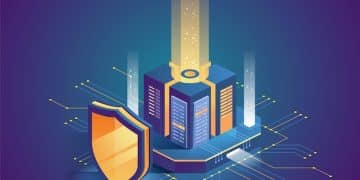Federal Student Loan Forgiveness Programs: What’s New in 2025?

Federal student loan forgiveness programs are constantly evolving, and in 2025, borrowers can expect potential changes to existing programs like Income-Driven Repayment (IDR) plans and Public Service Loan Forgiveness (PSLF), as well as the possibility of new forgiveness initiatives.
Navigating the world of federal student loans can be overwhelming, especially with the constant updates and changes to forgiveness programs. Are you wondering what’s the latest on federal student loan forgiveness programs in 2025? Let’s delve into the potential changes and what they might mean for borrowers like you.
Understanding Current Federal Student Loan Forgiveness Programs
Before diving into potential 2025 changes, it’s important to understand the existing federal student loan forgiveness programs currently available to borrowers. Having a good grasp of these programs will allow you to better understand how the future changes can affect your options.
Income-Driven Repayment (IDR) Plans
IDR plans, such as Income-Based Repayment (IBR), Pay As You Earn (PAYE), and Revised Pay As You Earn (REPAYE), offer forgiveness after a set amount of qualifying payments, usually 20 or 25 years. The remaining balance is then forgiven.
Public Service Loan Forgiveness (PSLF)
The PSLF program forgives the remaining balance on Direct Loans after 120 qualifying monthly payments made while working full-time for a qualifying employer, such as a government organization or a non-profit.
< ul >
These programs each have specific qualifications and application processes. Staying informed about the details of each can help you determine if you’re eligible for forgiveness.
Potential Changes to IDR Plans in 2025
Income-Driven Repayment plans are subject to adjustments and revisions, depending on governmental and legal review. Understanding the trends and possible changes and adaptations is crucial to preparing you for the future.
Simplification of IDR Options
There has been discussion on consolidating the existing IDR plans into a more streamlined system. This would make it easier for borrowers to understand their options and choose the most suitable plan.
Changes to Income Calculation
Some proposals suggest altering how income is calculated for IDR plans. This could involve using a different percentage of discretionary income or changing the definition of discretionary income itself.
These adjustments could change the repayment and potential forgiveness amounts for borrowers using IDR plans. Keeping up with these potential updates is vital.
SAVE Plan Adjustments
The SAVE plan, also known as Saving on a Valuable Education plan, is an income-driven repayment plan designed to make student loan payments more affordable based on income and family size. Adjustments to this plan could include changes to the income calculation, interest accrual, or eligibility criteria. These modifications could significantly impact the monthly payments and total repayment amount for borrowers enrolled in the SAVE plan in 2025.
Staying informed about these potential changes can help you make informed decisions about the best path for managing your student loans and seeking eventual forgiveness.
Updates on Public Service Loan Forgiveness (PSLF) Eligibility
The PSLF program has seen several changes in recent years, especially with temporary waivers. As 2025 approaches, it’s crucial to know the current eligibility requirements.
Working full time in a non-profit, educational, health, or government sector is required for participation. Also, only direct loans are eligible; however, there are opportunities to consolidate other federal student loans into a direct loan.
Understanding if your particular employment qualifies under the PSLF can be tricky in certain circumstances. It is recommended to reach out to a PSLF specialist for questions you have about employment eligibility.
< ul >
These updates can affect who qualifies for PSLF and how the program is administered. Borrowers should stay informed about any new guidance from the Department of Education.
New Forgiveness Initiatives on the Horizon
Beyond changes to existing programs, there’s always the possibility of new federal student loan forgiveness initiatives being introduced. Political and economic factors often drive these changes, so it’s worth keeping an eye on policy developments.

Comprehensive Loan Forgiveness Proposals
Some policymakers advocate for broader student loan forgiveness measures that would provide relief to a wider range of borrowers, regardless of their income or employment sector.
Targeted Forgiveness Programs
Other proposals focus on targeted forgiveness for specific groups of borrowers, such as those in high-need professions or those who attended institutions with low completion rates.
Monitoring legislative updates is essential to understanding whether any new forgiveness initiatives will materialize and how they could benefit you. Several factors can influence the likelihood of new changes.
< ul >
Staying abreast of these factors can better position you to take advantage of new initiatives if they ever come to fruition.
How to Prepare for Potential Changes in 2025
Given all the potential shifts in federal student loan forgiveness programs, it’s wise to take proactive steps to prepare. There are many ways to stay on top of important things that could affect your forgiveness eligibility status.
Stay Informed
Regularly check the Department of Education’s website for updates and announcements. Subscribe to newsletters and follow reliable news sources that cover student loan policy.
Review Your Loan Portfolio
Understand the types of federal student loans you have, the terms of your repayment plan, and your eligibility for existing forgiveness programs. Be aware of any deadlines or requirements you need to meet.
< ul >
These steps should help any borrower understand what is needed from them and what they can expect in the near future.
Expert Advice on Navigating Student Loan Forgiveness
Navigating student loan forgiveness can be intricate, so seeking expert advice is often worthwhile. Here are some expert insights to consider.
Consult with a Financial Advisor
A financial advisor can help you assess your overall financial situation and develop a plan to manage your student loans effectively. They can also advise you on the potential tax implications of student loan forgiveness.
Seek Guidance from a Student Loan Counselor
Non-profit organizations and student loan counseling agencies can provide free or low-cost assistance with understanding your repayment options and navigating forgiveness programs.
Seeking out the help of experts can allow you to come up with a personalized plan for financial success and student loan forgiveness.
| Key Point | Brief Description |
|---|---|
| 📢 Potential IDR Changes | Simplification, income calculation adjustments may occur. |
| 🧑🏫 PSLF Updates | Stay informed on eligibility and qualifying payments. |
| 💡 New Initiatives | Keep an eye on new proposals and policy developments. |
| ✅ Preparation Steps | Review loans, stay informed, and seek expert advice. |
Frequently Asked Questions (FAQ)
▼
The current IDR plans include Income-Based Repayment (IBR), Pay As You Earn (PAYE), Revised Pay As You Earn (REPAYE), and Income-Contingent Repayment (ICR). Each has different eligibility and calculation methods.
▼
PSLF forgives the remaining balance on Direct Loans after 120 qualifying monthly payments made while working full-time for a qualifying employer, such as a government organization or a non-profit.
▼
Potential changes include simplification of IDR options, changes to income calculation methods, and adjustments to eligibility criteria. These could affect monthly payments and total repayment amounts.
▼
Stay informed by regularly checking the Department of Education’s website, review your loan portfolio, and consider consulting with a financial advisor or student loan counselor for personalized guidance.
▼
It’s possible. Policymakers may propose comprehensive or targeted forgiveness programs. Stay updated on legislative and policy discussions to see if any new initiatives emerge that could benefit you.
Conclusion
Keeping up with the latest on federal student loan forgiveness programs is essential for borrowers in 2025. By understanding current programs, staying informed about potential changes, and preparing proactively, you can make informed decisions about the options that work best for your financial situation.





